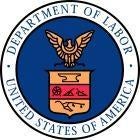At first things are great, you feel supported and you’re optimistic about the future. But then you notice some unusual behavior and you start to wonder: Is this relationship as healthy as it should be? Is it serving your best interests? After everything you’ve put into it, what are you taking away?

Many employees invest part of their paychecks into a retirement plan like a 401(k). Generally, employers withhold some of their earnings and transfer them into an account in the retirement savings plan. While the majority of employers invest that money sensibly and responsibly, abuse does happen.
The Labor Department’s Employee Benefits Security Administration enforces several laws and regulations designed to protect retirement savings, but workers can take some responsibility for their own protection by learning the warning signs of benefits abuse:
-
Chronic lateness: Your 401(k) or individual account statement is consistently late or comes at irregular intervals.
-
Trust issues: Your account balance does not appear to be accurate.
-
Broken promises: Your employer failed to transmit your contribution to the plan on a timely basis – or at all.
-
Disagreements: Investments listed on your statement are not what you authorized.
-
Constant changes: Frequent and unexplained changes in investment managers or consultants.
These are just five examples of “red flag” behaviors that could indicate problems with your 401(k) plan. But what should you do if you suspect your 401(k) isn’t working for you?
A good first step is to contact your employer or the plan administrator and request an explanation – or a correction. If you’ve got questions, you can also reach out to one of our benefits advisors at askebsa.dol.gov or 1-866-444-3272.
Ultimately, one of the best ways to protect yourself and your financial interests is to stay informed. As part of my agency’s mission to protect the employment savings of America’s employees and retirees, EBSA provides many resources to help people plan for retirement and assess their investment decisions. Check out our full list of 401(k) red flags, as well as general information about retirement plans and a breakdown of 401(k) plan fees. For additional resources and information, visit dol.gov/EBSA.
Odds are you want the money you earn through your retirement plan to support you for the rest of your life – so make sure it’s a relationship that works for you.


 />i
/>i
